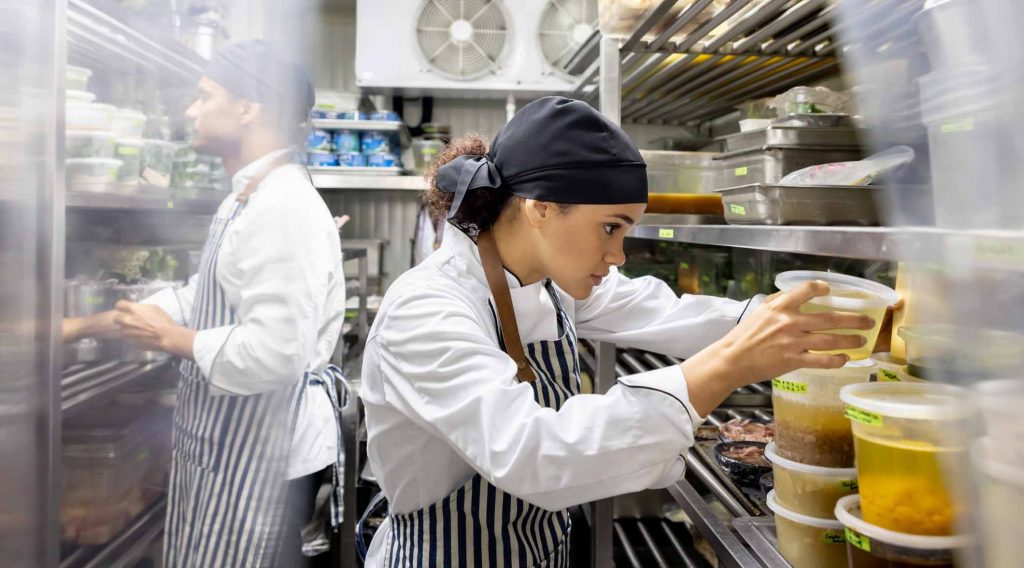
For a year that holds few certainties, it’s refreshing to have some strong predictions for 2019. Mintel, the market research company, have analysed global market trends in food and drink and released some central predictions for the coming year.
Some now-familiar concepts are set to carry on: it will come as little surprise that sustainability features high on Mintel’s list, making an ever-stronger impact on foodservice from sourcing to consumer. Some surprise industry crossovers feature, too, as foodservice looks to the beauty industry for inspiration through the lens of wellness. Foodservice will continue to broaden its horizons, as customers come to expect more and more from the food they consume – but how realistic, and accessible, are these trends?
The circle of life
Recycling is no longer a generous afterthought. Mintel draws attention to the major shift in the public’s attitude toward plastic, which is increasingly unfashionable as more awareness is raised about the damage that plastic waste wreaks on the oceans.
Sustainable produce will reach throughout the whole supply chain, not just by adapting packaging for recycling but sourcing and growing products that are, as Mintel states, “grown in accordance to regenerative agriculture practices”. Soil comes into focus in Mintel’s report, as they point out that soil is being lost faster than it’s being refreshed. Interestingly, Mintel surveyed Chinese consumers (aged 20-49) on what they consider to be the factor that makes a company ethical. The largest single factor that they place importance on was ‘transparent provenance information’.
Jenny Zegler, Mintel’s associate director of food at drink, emphasised in her statement that there is significant consumer expectation at the door of corporate programmes. “Support of and demand for more corporate sustainability programmes will grow,” she said, “as consumers better understand what’s required to get closer to achieving a truly circular food and drink economy.”
As retailers who have rolled out loyalty schemes or reward discounts know, customers like to see a personal benefit from their efforts. Mintel says that 67% of customers in the UK find acting in an environmentally friendly way more appealing when they see the results. Similarly, 46% of the Brazilian middle class (the specific demographic surveyed by Mintel) would happily exchange empty packaging for a discount on future purchases.
It’s about collaboration at every stage of the supply process – between suppliers and manufacturers, between governments and not-for-profits, and down to the consumer’s relationship with the retailer. Expect supply chains to be examined and developed for sustainability, and expect to reduce as much plastic wastage as possible in a collective fight for a better environment.
Wellness on wheels: a realistic proposition?
Of course, the caveat of a health-conscious lifestyle is the need for it to be permanent (or, at least, regular). The final trend that Mintel predict for next year is a deeper dive into healthy, flavoursome and personalised options for convenience food and drink. Busy lifestyles shouldn’t come at the cost of good nutrition, in theory.
Mintel’s Lynn Dornblaser, director of insights and innovation, summarises the key concern of the convenience food industry, and that of many consumers. “The common denominator,” she says, is that “everyone is pressed for time.” Moreover, the report itself says tongue-in-cheek, is that “many people now consider themselves to be foodies.” All together, exacting consumer standards need to be met at rapid pace to meet demand.
However, there is the possibility when it comes to a desire for sustainable and healthy foods of a disparity between aspiration and reality. UK-based foodservice consultant Duncan Hepburn FCSI of Hepburn Associates points out that as the foodservice industry covers a wide range of catering options from hospital food – which his business works in – to fine dining. “Some people will be prepared to buy healthy and sustainable food, and to look for that first,” he agrees, “but there is a large section of the market that focuses on the price point, not the product credentials. A captive audience especially looks for the best price.
“Consumers would like to see it, overall, but there’s a difference between how they respond to a survey and how they vote with their cash. To an extent, there is a difference between what they aspire to want and what they can afford to buy.”
Health trends are a common factor in all of Mintel’s predictions next year, but Hepburn raises the point that for all the diversity of food options offered by retailers, they will likewise offer cheaper offers. The near-ubiquitous high-street meal deal, for example, is a best selling scheme and has not as yet been ousted by healthy (but pricier) meal-kit options.
The good, the bad, and the beautiful
Wellness is a holistic idea, built on the basis of lifestyle rather than a single drug, product or foodstuff. As such, multiple industries stand to gain from the multiple ways of buying into a healthy, wellness-based lifestyle. For foodservice, Mintel predicts that this will come with inspiration from the beauty industry.
Old marketing terms like ‘anti-aging’ are out, and are replaced with positive messages of aging well, and healthily. Foodservice can start to echo the same proactive and beneficial language to emphasise the links between eating well and staying well. Mintel predicts that customers’ concerns will align with health and wellness as lifespans stretch out longer – as they say, “more food and drink can be formulated to address concerns from people of all ages about bone, joint, brain and eye health as well as other age-related concerns.”
Foods that claim to offer health benefits are not new, but they are becoming more focused on health issues that preoccupy customers today. Eye health, for example, is pressing as consumers worldwide spend more and more time looking at screens. For older customers, a plethora of products offer supplementary calcium and vitamins. Mintel points out that 55% of Polish consumers over the age of 55 already use functional food to keep up their heart health. With a rapidly aging population, this will only become more sought after.
Mintel is clear on their expectation that the foodservice industry and the beauty industry will collaborate. Angelia Teo, of Mintel’s beauty and personal care sector, suggests that “a smart starting point would be for food and drink brands to take the hard-earned lessons learned from the beauty industry” – particularly in regard to using positive, liberating messaging that promotes a healthy lifestyle.
German consultant Thomas Mertens FCSI, of S.A:M is unsurprised by the report’s focus on adaptability and cross-industry reference. “To show demand-oriented product and offer presence becomes more important,” he points out, “by constant adaptation, flexibility or presence in virtual space. We are constantly learning from our customer markets and are also more frequently familiarising ourselves with foreign specialists in order to remain attractive for the market.”
In 2019, expect to see a crossover of style and substance between the foodservice and the beauty industries, as both shift to positive and wellness-oriented language to address longevity- and health-related concerns. Supplements will continue to dominate the market for health solutions, as will natural solutions with medicinal properties: ginger, turmeric, and green tea extract were all pointed out by Mintel for their wellbeing credentials.
Healthy and wise
Mintel’s trends are relatively aspirational for the consumer. As yet, price will tend to trump other factors for a majority of paying customers – as Duncan Hepburn pointed out – although sustainability is often still an important value for them.
If the increasingly abundant supply of sustainable options continues, there might be a corresponding shift in the cost of eating sustainably on the go in particular.
2019 will be a year of publicity for sustainable efforts, and it is likely that admirable changes will be made throughout supply chains. As it becomes more accessible, more people will choose it: the demand is there.
Frances Ball




